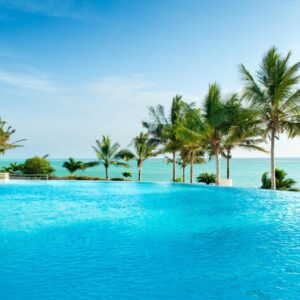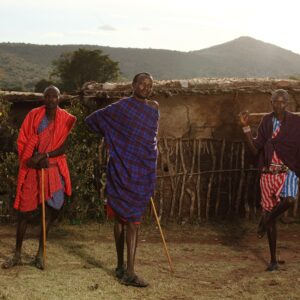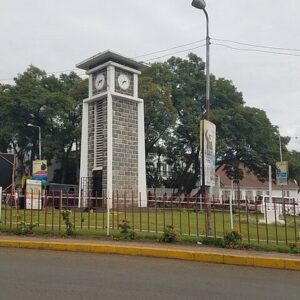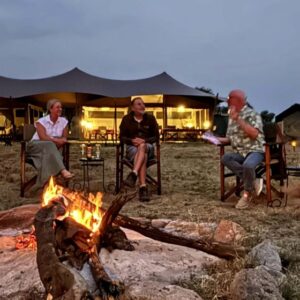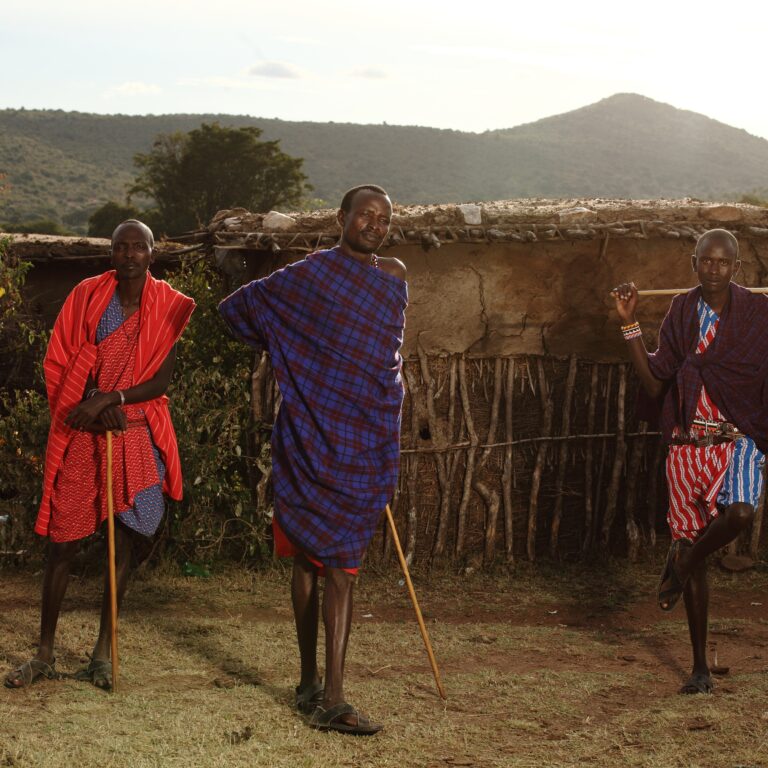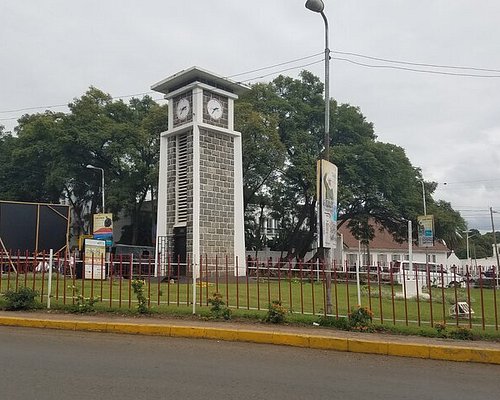When planning a luxury safari in Tanzania, key considerations include choosing the right time to visit. Selecting your ideal safari destinations and accommodations, deciding on the duration of your trip, and setting a realistic budget. Ensuring health and safety precautions are in order. It’s also important to choose a reputable safari company. Pack appropriately, and understand wildlife viewing etiquette and cultural sensitivity. Embarking on a luxury safari in Tanzania is an experience like no other.
Tanzania stands as the undisputed heartland of the African safari, and for those seeking an experience that transcends mere wildlife viewing. A luxury safari offers unparalleled comfort, exclusivity, and a profound connection with the wild. Planning such an opulent adventure requires meticulous attention to detail. Ensuring every element from the moment you consider your trip to your farewell flight is seamless and extraordinary.
Here’s what to consider when orchestrating your perfect luxury safari in Tanzania. The breathtaking landscapes, abundant wildlife, and rich cultural heritage combine to create a journey that will stay with you forever. However, planning a luxury safari requires careful thought and consideration to ensure that every detail meets your expectations. Here’s what you need to consider when planning your Tanzanian adventure.
1. Choosing the Right Time to Visit: Optimizing Your Wildlife Spectacle
When planning a luxury safari in Tanzania, choosing the right time to visit is crucial for optimizing wildlife viewing and enjoying the best weather conditions. The dry season from June to October is generally considered ideal due to warmer weather. Drier weather and increased wildlife activity around water sources. The timing of your luxury safari is paramount. Tanzania offers excellent wildlife viewing year-round. Specific seasons enhance certain experiences:
Dry Season (June to October). This is peak safari season, characterized by sparse vegetation and animals congregating around dwindling water sources. Making sightings easier and more frequent. This period is crucial for witnessing the dramatic river crossings of the Great Migration in the northern Serengeti (July to October). Expect clear skies, cooler temperatures, and the highest concentration of wildlife. Luxury lodges will be at their busiest, and prices at their highest.
Green Season (November to May). Often called the “emerald season,” this period brings lush landscapes, vibrant birdlife (due to migratory species). The calving season in the southern Serengeti (January to February). Attracting numerous predators. While some roads can be muddy, luxury camps. Often offer attractive off-season rates and a more intimate experience with fewer crowds. Photography can be exceptional with dramatic skies and clearer air. Your choice depends on your priorities. The iconic migration and guaranteed game viewing in the dry season, or lush scenery, birding, and exclusivity in the green season.
2. Selecting the Ideal Safari Destination: Curating Your Wilderness Portfolio
When planning a luxury safari in Tanzania, and selecting the ideal destination. Consider your budget, time constraints, and desired animal sightings. Preferred level of comfort alongside the specific offerings of various national parks. Like the Serengeti or Ngorongoro Crater, or more exclusive options like Ruaha or Nyerere National Park. Tanzania offers diverse safari circuits, each with its unique charm. A luxury safari often combines destinations for a richer experience:
Northern Circuit (Serengeti, Ngorongoro Crater, Tarangire, Lake Manyara). This is Tanzania’s most famous circuit. The Serengeti provides vast plains and the Great Migration. The Ngorongoro Crater offers an unparalleled density of wildlife within a natural caldera. Tarangire is known for its massive elephant herds and baobab trees, and Lake Manyara for its tree-climbing lions and diverse birdlife. Luxury lodges here often blend seamlessly with the environment. Offering exceptional comfort.
Southern Circuit (Nyerere National Park – formerly Selous, Ruaha National Park). For a more remote and exclusive luxury experience, the south is ideal. Nyerere, Africa’s largest wildlife reserve. Offers boat safaris and walking safaris alongside traditional game drives. Ruaha is renowned for its large lion population and unique ecosystem. Lodges here are often smaller, more intimate, and offer a truly wild, less-trafficked experience.
Western Circuit (Katavi National Park, Mahale Mountains National Park). This is for the ultimate adventurer. Katavi offers untouched wilderness and incredible concentrations of hippos and crocodiles. Mahale is famous for chimpanzee trekking. Access is typically by private charter, ensuring extreme exclusivity and unparalleled intimacy with nature. Many luxury safaris will combine a classic safari experience with a tranquil beach extension in Zanzibar, Pemba, or Mafia Island. Offering a perfect blend of adventure and relaxation.
3. Accommodations: Where Luxury Meets the Wild
When planning accommodations for a luxury safari in Tanzania, consider factors such as desired amenities, family suitability, Wi-Fi availability, and specific experiences like private plunge pools or outdoor showers. Luxury accommodations range from lavish tented camps to opulent lodges. Offering unparalleled comfort in the wilderness. The cornerstone of a luxury safari is undoubtedly the accommodation. This transcends basic lodging, offering Bespoke Tented Camps. Far from traditional camping, these are opulent canvas havens with en-suite bathrooms, king-sized beds, gourmet dining, private verandas, and often plunge pools. All while maintaining a strong connection to the surrounding wilderness.
Exclusive Lodges. Architecturally, High-end super Luxury Accommodation for Tanzania Safari is stunning; these properties blend five-star amenities with breathtaking views, often featuring infinity pools, spas, fine dining restaurants, and personalized butler service. Private Villas/Houses. For ultimate privacy, some luxury operators offer exclusive-use villas within wildlife areas, complete with private guides, chefs, and dedicated staff. Prime Locations. Luxury accommodations are strategically located for optimal game viewing, often inside the parks or in private concessions adjacent to them, allowing for off-road driving, night drives, and walking safaris not permitted in national parks. Expect exceptional service, gourmet cuisine tailored to your preferences, and an intimate ambiance.
4. Tailoring the Safari Experience: Every Detail Customized
When planning a luxury safari in Tanzania and tailoring the experience. Key considerations include choosing the right time of year for optimal wildlife viewing and considering factors like budget, accommodation, transportation, and destinations to craft a personalized itinerary. A luxury safari is not off-the-shelf; it’s a bespoke creation. This involves tailoring the safari experience to your precise interests: Private Guides and Vehicles. Essential for flexibility, allowing you to spend as much or as little time at sightings as you wish, go off-road (where permitted), and embark on specialized drives (e.g., photography, birding).
Specialized Activities. Beyond traditional game drives, consider hot air balloon safaris over the Serengeti, walking safaris, boat safaris, fly-camping (sleeping under the stars), chimpanzee trekking, or even helicopter tours for unparalleled perspectives. Honeymoon or Family Focus. Itineraries can be crafted for romantic getaways with intimate dinners and sundowners, or family adventures with dedicated children’s programs and flexible schedules. Pacing. Design a pace that suits you – from action-packed days to leisurely mornings with plenty of time for relaxation and spa treatments.
5. Ensuring a Stress-Free Journey: Seamless Logistics
To plan a stress-free luxury safari in Tanzania, consider timing your trip during the dry season (late June to October), selecting your safari destinations and activities carefully, choosing suitable luxury accommodation, booking with a reputable operator, and budgeting for the experience, while also prioritizing health and safety. Luxury travel is defined by effortlessness. A premium safari ensures a stress-free journey through: Private Charter Flights. Minimizing travel time and maximizing comfort by flying directly to remote airstrips near lodges, bypassing lengthy road transfers.
Meet-and-Greet Services. From the moment you land at the international airport, you’ll be met by dedicated representatives who handle all transfers, baggage, and customs formalities. Seamless Transitions. Every transition, whether between parks, lodges, or activities, is flawlessly managed with minimal waiting and maximum comfort. 24/7 Support. A dedicated point of contact or concierge service is available around the clock to address any needs or unforeseen circumstances.
6. Duration and Budget for Your Luxury Safari: Investing in Experience
When planning a luxury safari in Tanzania, key considerations for duration and budget include the desired level of exclusivity, chosen accommodations, activities, parks visited, and time of year. Luxury safaris typically start around $600 and can exceed $2,500 per person per day, encompassing private game drives, five-star accommodations, and personalized services. A luxury safari is a significant investment, but it delivers unparalleled value in terms of experience.
Duration. Typically, luxury safaris range from 7 to 14 days, allowing ample time to explore multiple parks, relax, and fully immerse yourself without feeling rushed. A shorter 4-5 day luxury trip can also be incredibly impactful if focused on one or two key areas. Budget. While prices vary widely based on season, lodge choice, and activities, expect to budget anywhere from $1,000 to $3,000+ per person per day for an all-inclusive luxury experience. This typically covers internal flights, private vehicles and guides, top-tier accommodation, all meals, drinks (often including premium alcohol), park fees, and exclusive activities.
7. Packing for the Safari: Functional Elegance
When planning a luxury safari in Tanzania and packing, consider comfortable, lightweight, neutral-colored clothing, essential gear. Like binoculars and sun protection, and practical items such as a medical kit, insect repellent, and toiletries, keeping in mind luggage restrictions often imposed by safari operators. Packing for a luxury safari blends practicality with comfort and a touch of elegance for evenings. Clothing. Neutral colors (khakis, greens, browns) are best for game viewing. Pack lightweight, breathable layers for warm days and cool evenings. Long sleeves and pants protect against sun and insects. A light waterproof jacket is advisable. Footwear. Comfortable walking shoes or sneakers are essential. Sandals or flip-flops for camp.
Essentials. Wide-brimmed hat, high-SPF sunscreen, strong insect repellent (DEET recommended), sunglasses, personal medications, and a basic first-aid kit. Camera Gear. Binoculars (one pair per person is highly recommended). A good camera with a telephoto lens, extra batteries, memory cards, and chargers. Baggage. Most internal bush flights have strict weight limits (often 15-20 kg/33-44 lbs per person) and require soft-sided luggage. Your safari operator will advise on specifics.
8. Choosing a Safari Company: The Curator of Your Dream
When choosing a safari company for a luxury safari in Tanzania, consider factors like the company’s reputation and reviews, safety standards and insurance, experience and expertise, responsiveness and communication. Tailored itineraries and flexibility, eco-friendly practices, and value for money. The choice of safari company is paramount. For a luxury experience, seek operators with: Specialization in Luxury. They should have deep relationships with top-tier lodges and a proven track record of designing high-end itineraries. Expert Guides. Highly trained, knowledgeable, and charismatic guides who enhance every aspect of your journey. Personalized Service. A dedicated safari specialist who works with you one-on-one to craft every detail. Strong Reputation. Look for glowing reviews, industry awards, and affiliations with luxury travel networks. Safety Record. Impeccable safety protocols for all aspects of the trip.
9. Safety & Etiquette: Respecting the Wild and Its People
When planning a luxury safari in Tanzania, prioritize safety and etiquette by respecting wildlife and local culture. Following your guide’s instructions, maintaining a clean environment, and packing appropriately for the conditions. Even in luxury, understanding safety and etiquette is crucial. Always follow your guide’s instructions. They are experts in animal behavior and park regulations. Stay in the vehicle. Unless in designated areas or on guided walks. Maintain silence and respect. Keep your voices low during game drives to avoid disturbing animals and other visitors. No feeding animals. This can alter their behavior and be dangerous. Leave no trace. Take all litter with you. Cultural Sensitivity. When visiting local communities, dress respectfully, ask permission before taking photos, and engage with an open mind.
10. Book in Advance – Reservations: Securing Exclusivity
When planning a luxury safari in Tanzania and book in advance. Consider timing, destinations, accommodations, budget, and choosing a reputable tour operator. As luxury options and peak season travel (especially for the Great Migration) require significant lead time for securing prime spots and better pricing. For a luxury safari, booking well in advance (9-18 months. Especially for peak season or specific Great Migration dates) is not just a recommendation; it’s a necessity. This ensures: Availability. Securing spots at the most sought-after, exclusive lodges and camps, which often have limited rooms. Preferred Guides. Access to the most experienced and highly requested safari guides. Best Flight Options. Better selection and often better pricing for international and internal flights. Tailored Itineraries. Ample time for your safari specialist to customize every detail to your preferences.
11. Getting Around: The Luxury of Efficiency
When planning a luxury safari in Tanzania, key considerations include choosing the right time to visit and the destinations. Selecting appropriate accommodation and activities, budgeting, booking in advance, and understanding visa and health requirements. Getting around Tanzania typically involves a combination of internal flights and private 4×4 safari vehicles, often arranged by your tour operator. Luxury safaris prioritize efficient and comfortable travel within Tanzania. While long road transfers are avoided, getting around typically involves: Light Aircraft Flights. The primary mode of inter-camp travel, offering spectacular aerial views and reducing travel time significantly. These are typically small, single or twin-engine planes. Private Safari Vehicles. Once at the airstrip, you’ll be met by your private vehicle and guide for all game drives and transfers to your lodge. These vehicles are custom-built for comfort and optimal viewing.
12. Cultural Immersion: Adding Depth to Your Journey
When planning a luxury safari in Tanzania with a focus on cultural immersion. Consider choosing the right destinations and accommodations. Planning for exclusive cultural experiences. Ensuring responsible and respectful interactions with local communities and wildlife. These aspects are crucial for a well-rounded and enriching safari experience. A luxury safari often weaves cultural immersion into the itinerary. Adding profound depth beyond wildlife encounters. This can include: Ethical Maasai Village Visits. Authenticated experiences that respect community traditions. Visits to Hadzabe and Datoga Tribes. Unique opportunities to learn about ancient ways of life. Spice Tours in Zanzibar. A sensory journey through the island’s rich history. Conversations with Lodge Staff. Many luxury lodges employ staff from local communities. Offering organic opportunities for cultural exchange.
13. Contributing to Conservation and Community: Responsible Luxury
A hallmark of true luxury travel today is its commitment to sustainability. Many high-end safari operators and lodges in Tanzania are deeply involved in contributing to conservation and community development: Conservation Fees. A significant portion of your park fees directly funds anti-poaching, habitat protection, and wildlife research. Community Projects. Lodges often support local schools, health clinics, and economic empowerment initiatives. Ensuring tourism benefits the people living alongside the parks. Eco-Friendly Operations. Many luxury camps operate with minimal environmental impact. Using solar power, recycling, and responsible water management.

